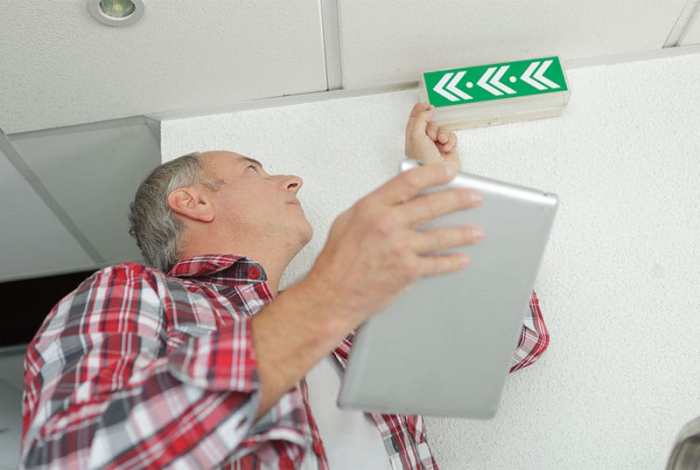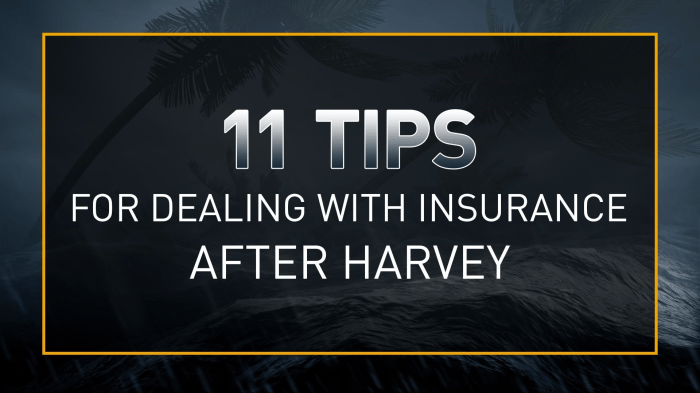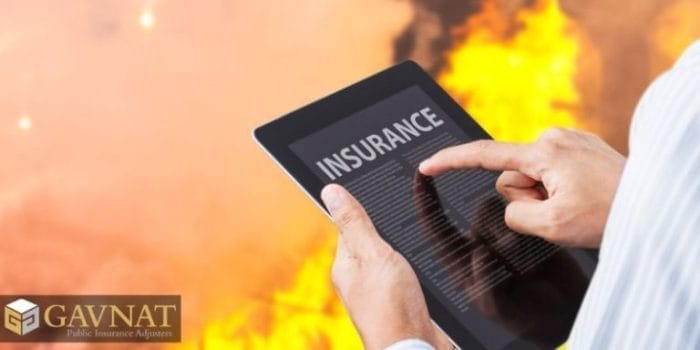In the aftermath of a devastating fire, dealing with the insurance company to recover losses can be a daunting task. This guide provides comprehensive tips and strategies to help individuals navigate the claims process effectively and ensure fair compensation for their personal effects.
From filing a claim and documenting personal effects to negotiating with insurance adjusters and appealing denied claims, this guide covers every aspect of the process. It also includes valuable information on preventing future losses and accessing additional resources for support.
Filing a Claim

Navigating the process of filing an insurance claim after a fire can be daunting, but it’s crucial to understand the steps involved to ensure a smooth and successful resolution. This guide will walk you through the process, including the necessary documentation, timelines, and potential challenges you may encounter.
Submitting a Claim
The first step is to contact your insurance company as soon as possible after the fire. You can typically do this by calling their customer service number or visiting their website. Be prepared to provide basic information about the fire, such as the date, time, and location, as well as the cause if known.
The insurance company will assign you a claims adjuster who will guide you through the process.
Required Documentation
To support your claim, you will need to provide various documents to the insurance company. These may include:
- A completed claim form, provided by your insurance company.
- A copy of the police report, if one was filed.
- Photographs or videos of the damage.
- Receipts for any expenses incurred due to the fire, such as temporary housing or clothing.
- An inventory of your damaged or destroyed belongings, including their value.
Timeline
The timeline for submitting a claim and receiving a response varies depending on the insurance company and the complexity of the claim. However, in general, you can expect the following:
- You should submit your claim within a reasonable time frame, typically within 30 to 60 days after the fire.
- The insurance company will review your claim and may request additional information or documentation.
- Once the insurance company has all the necessary information, they will issue a settlement offer, which is the amount of money they are willing to pay for your claim.
- You can accept or reject the settlement offer. If you accept it, the insurance company will issue payment.
Potential Challenges
There are a few potential challenges that you may encounter during the claims process:
- The insurance company may dispute the amount of your claim or deny it altogether.
- The claims process may be delayed if the insurance company needs to investigate the fire or if there is a disagreement about the cause of the fire.
- You may have to pay a deductible before the insurance company will pay for your claim.
Documenting Personal Effects
Following a fire, documenting your damaged or destroyed personal effects is crucial for a successful insurance claim. This comprehensive record helps you provide accurate information about your losses, ensuring a fair settlement.
Creating a Detailed Inventory
Creating a detailed inventory of your personal effects is essential for documenting your losses. This inventory should include the following information for each item:
- Description: Provide a detailed description of the item, including its make, model, size, color, and any unique features.
- Value: Estimate the value of the item at the time of the fire. If you have receipts or appraisals, use those as evidence of value.
- Photographs: Take photographs of each damaged or destroyed item. These photographs will help the insurance company assess the extent of the damage.
Keeping Receipts and Other Documentation
In addition to creating a detailed inventory, you should also keep all receipts and other documentation related to your personal effects. This documentation can include:
- Receipts for purchases: Keep receipts for all purchases of personal effects, as these can be used to prove the value of the items.
- Appraisals: If you have had your personal effects appraised, keep copies of the appraisals. These appraisals can be used to prove the value of the items.
- Warranty information: Keep warranty information for all of your personal effects. This information can be used to prove the value of the items and may also help you get a replacement item.
Valuation of Personal Effects

Determining the value of personal effects for insurance purposes is crucial to ensure a fair settlement in the event of a covered loss. Various methods are used to assess the value of personal property, each with its advantages and disadvantages.
Understanding these methods and negotiating effectively with the insurance company can help you achieve a satisfactory outcome.
Replacement Cost
Replacement cost is the amount it would cost to replace a lost or damaged item with a new one of like kind and quality. This method is often preferred by policyholders as it provides the most comprehensive coverage. However, depreciation may be a factor, and the insurance company may only cover the depreciated value of the item.
Actual Cash Value
Actual cash value is the value of an item at the time of loss, taking into account its age, condition, and depreciation. This method is generally used when the item cannot be replaced or when the cost of replacement exceeds its actual value.
Depreciation can significantly reduce the settlement amount, making this method less favorable for policyholders.
Fair Market Value
Fair market value is the price at which an item would sell in the open market between a willing buyer and a willing seller. This method is often used when the item is unique or has sentimental value. Determining fair market value can be challenging and may require the involvement of an appraiser.
Tips for Negotiating with the Insurance Company
- Keep detailed records of your personal effects, including receipts, appraisals, and photographs.
- Provide a detailed inventory of your lost or damaged items, including a description, quantity, and estimated value.
- Be prepared to negotiate with the insurance company. Start by presenting your claim and supporting documentation.
- Be willing to compromise, but do not accept an offer that is significantly lower than the value of your personal effects.
- If necessary, consider hiring a public adjuster to assist you with the negotiation process.
Insurance Coverage and Exclusions

Understanding the coverage and exclusions in your insurance policy is crucial for effective handling of personal effects claims after a fire. Various types of insurance policies may provide coverage for personal belongings, each with its own terms and conditions.
Common types of insurance coverage for personal effects include:
- Homeowners Insurance: Covers personal belongings in your primary residence, including furniture, appliances, clothing, and electronics.
- Renters Insurance: Provides coverage for personal belongings in a rented property.
- Personal Property Insurance: Specifically designed to cover valuable items like jewelry, artwork, or collectibles.
- Flood Insurance: Covers personal belongings damaged by flooding.
It’s essential to review your insurance policy carefully to determine the specific coverage limits, deductibles, and exclusions that apply to your personal effects. Common exclusions or limitations in insurance policies may include:
- High-Value Items: Certain policies may have limits on coverage for high-value items, such as jewelry or artwork. Additional coverage may be required for these items.
- Wear and Tear: Insurance policies typically do not cover wear and tear or gradual deterioration of personal belongings.
- Pre-existing Conditions: Damage to personal belongings caused by pre-existing conditions, such as mold or rust, may not be covered.
- Acts of Nature: Some policies may exclude coverage for damage caused by certain natural disasters, such as earthquakes or floods, unless specific coverage is purchased.
Carefully reviewing your insurance policy and understanding the coverage and exclusions will help you make informed decisions about filing a claim for personal effects after a fire. If you have any questions or concerns about your coverage, contact your insurance company or agent for clarification.
Dealing with Insurance Adjusters

After a fire, dealing with insurance adjusters can be both challenging and crucial. Here are some tips to communicate effectively and present a strong case for coverage.
Establishing Effective Communication
Maintain a professional and respectful demeanor during all interactions with the insurance adjuster. Provide clear and accurate information, avoiding exaggerations or emotional outbursts.
Be prepared to provide detailed information about the personal effects lost or damaged in the fire, including descriptions, dates of purchase, and estimated values.
Keep a record of all conversations with the insurance adjuster, including dates, times, and key points discussed. This documentation can be invaluable if any disputes arise.
Understanding the Role of the Insurance Adjuster
The insurance adjuster’s primary role is to assess the damage caused by the fire and determine the amount of coverage that applies to your personal effects.
The adjuster will typically inspect the damaged property, review your policy, and gather information from you and other parties involved in the claim.
Based on their findings, the adjuster will make a settlement offer, which may or may not be acceptable to you.
Negotiating a Fair Settlement
If you are not satisfied with the initial settlement offer, you have the right to negotiate with the insurance adjuster to obtain a fair settlement.
To strengthen your case, provide the adjuster with detailed documentation, such as receipts, appraisals, and photographs of the damaged personal effects.
Be prepared to discuss the value of your personal effects and provide evidence to support your claims. You may also want to consider hiring a public adjuster to help you negotiate with the insurance company.
Appealing a Denied Claim

If your insurance claim for personal effects after a fire is denied, you have the right to appeal the decision. The appeals process can be complex and time-consuming, but it is important to follow the steps carefully to increase your chances of success.
Understanding the Appeals Process
The appeals process typically involves the following steps:
1. Review the Denial Letter
Carefully read the denial letter to understand the specific reasons for the denial. This will help you determine the grounds for your appeal.
2. Gather Supporting Documentation
Collect any additional documentation that supports your claim, such as photographs of the damage, receipts for the items lost or damaged, and estimates for repairs or replacements.
3. File an Appeal
Contact your insurance company to request an appeal form. The form will typically require you to provide information about the denied claim, the reasons for your appeal, and any additional supporting documentation.
4. Submit the Appeal
Send the completed appeal form and supporting documentation to the insurance company within the specified timeframe.
5. Await a Decision
The insurance company will review your appeal and issue a decision. This process can take several weeks or even months.
Tips for Effectively Presenting Your Case
To increase your chances of success in the appeals process, consider the following tips:
1. Be Clear and Concise
State your case clearly and concisely in the appeal form. Avoid rambling or using overly technical language.
2. Provide Strong Evidence
Include as much evidence as possible to support your claim, such as photographs, receipts, and estimates.
3. Be Persistent
The appeals process can be lengthy and challenging, but it is important to be persistent. Follow up with the insurance company regularly to inquire about the status of your appeal.
4. Consider Mediation or Arbitration
If your appeal is denied, you may consider mediation or arbitration to resolve the dispute. These processes involve a neutral third party who helps facilitate a settlement between you and the insurance company.
Additional Resources

Dealing with insurance companies after a fire can be challenging, but there are resources available to help you navigate the process and protect your rights.
Government Agencies
Government agencies provide various resources to assist individuals dealing with insurance companies after a fire.
- Federal Emergency Management Agency (FEMA): FEMA offers financial assistance and other resources to individuals affected by disasters, including fires. Visit their website or call 1-800-621-3362 for more information.
- State Insurance Departments: Each state has an insurance department that regulates insurance companies and can provide information and assistance to policyholders. Contact your state insurance department for more information.
- Consumer Financial Protection Bureau (CFPB): The CFPB is a federal agency that protects consumers from unfair, deceptive, or abusive financial practices. They can provide information and assistance to individuals dealing with insurance companies.
Consumer Protection Organizations
Consumer protection organizations advocate for the rights of consumers and can provide information and assistance to individuals dealing with insurance companies.
- National Insurance Consumer Helpline (NICH): NICH is a nonprofit organization that provides free and confidential assistance to consumers with insurance-related issues. Call 1-800-942-4242 for more information.
- Consumer Federation of America (CFA): CFA is a nonprofit organization that advocates for consumer rights. They have resources and information on insurance issues, including dealing with insurance companies after a fire.
- Insurance Information Institute (III): III is a nonprofit organization that provides information and resources on insurance. They have a section on their website dedicated to helping consumers after a fire.
Insurance Industry Associations
Insurance industry associations represent insurance companies and can provide information and assistance to policyholders.
- Insurance Bureau of Canada (IBC): IBC is the national trade association of the property and casualty insurance industry in Canada. They have resources and information on dealing with insurance companies after a fire.
- American Insurance Association (AIA): AIA is the national trade association of the property and casualty insurance industry in the United States. They have resources and information on dealing with insurance companies after a fire.
Insurance Ombudsmen and Dispute Resolution Programs
Insurance ombudsmen and dispute resolution programs can help resolve disputes between policyholders and insurance companies.
- Insurance Ombudsman (Canada): The Insurance Ombudsman is an independent body that resolves disputes between policyholders and insurance companies in Canada. Visit their website or call 1-800-268-8097 for more information.
- Insurance Ombudsman (United States): The Insurance Ombudsman is an independent body that resolves disputes between policyholders and insurance companies in the United States. Visit their website or call 1-800-221-4900 for more information.
Sample Claim Form
In the unfortunate event of a fire, filing a claim with your insurance company for personal effects can be a daunting task. To simplify this process, we have designed a sample claim form to help you document your personal effects and file a claim efficiently.
This comprehensive claim form includes detailed instructions and guidelines to ensure you provide all the necessary information required by your insurance company. Whether you’re dealing with a minor fire incident or a devastating loss, this form will serve as a valuable tool to assist you in recovering your losses.
Downloadable Claim Form
To access the downloadable or printable version of the claim form, please visit our website or contact your insurance company directly. The form is available in various formats, including PDF, Word, and Excel, to accommodate your specific needs and preferences.
Completing the Claim Form
To ensure a smooth and successful claim process, follow these steps when completing the claim form:
- Personal Information: Start by providing your personal details, including your name, address, contact information, and policy number.
- Incident Details: Describe the fire incident, including the date, time, location, and cause of the fire, if known.
- Property Damage: List all the personal effects that were damaged or destroyed in the fire. Provide a detailed description of each item, including its make, model, serial number, and purchase date.
- Replacement Cost: Estimate the replacement cost of each damaged or destroyed item. This can be done by researching current market prices or obtaining quotes from reputable retailers.
- Supporting Documentation: Attach copies of receipts, invoices, or other documents that support your claim. These documents can help verify the value of your personal effects and expedite the claim process.
- Additional Information: Provide any additional information that may be relevant to your claim, such as photographs of the damaged property or a copy of the fire report.
Once you have completed the claim form, review it carefully to ensure all the information is accurate and complete. Sign and date the form before submitting it to your insurance company.
Case Studies

To illustrate the process of dealing with insurance companies after a fire and obtaining fair settlements for personal effects, here are some real-life case studies:
Example 1: Successful Settlement
Case: A family’s home was destroyed in a fire, resulting in the loss of all their belongings. The family filed a claim with their insurance company, but the initial settlement offer was significantly lower than the value of their lost items.
Challenge: The family faced the challenge of proving the value of their lost possessions, as many of them were sentimental or unique items that lacked clear market value.
Strategy: The family worked with an experienced public adjuster who helped them gather detailed documentation of their lost items, including photographs, receipts, and appraisals. They also obtained estimates from contractors to support the cost of replacing their damaged property.
Outcome: After a thorough review of the family’s documentation and negotiations with the insurance company, the public adjuster was able to secure a fair settlement that covered the full value of their lost belongings.
Example 2: Denied Claim
Case: A homeowner filed a claim with their insurance company after a fire damaged their home and destroyed several valuable antiques.
Challenge: The insurance company denied the claim, citing an exclusion in the policy that limited coverage for antiques. The homeowner argued that the antiques were not specifically excluded and should be covered under their personal property coverage.
Strategy: The homeowner hired an attorney who specialized in insurance disputes. The attorney reviewed the policy and argued that the exclusion for antiques was ambiguous and did not apply to the homeowner’s situation.
Outcome: After a lengthy legal battle, the homeowner was able to successfully appeal the denied claim and obtain a settlement for the value of their lost antiques.
Final Summary

Dealing with insurance companies after a fire can be challenging, but by following the tips and strategies Artikeld in this guide, individuals can significantly improve their chances of obtaining a fair settlement for their personal effects. Remember to stay organized, document everything, and communicate effectively with your insurance company to ensure a successful claims process.
FAQ Corner
Question: What is the significance of creating a detailed inventory of personal effects after a fire?
Answer: A detailed inventory is crucial for accurately documenting the personal effects that were damaged or destroyed in the fire. It helps provide a clear record of the items, their descriptions, values, and photographs, which is essential for supporting your insurance claim.
Question: How can I determine the value of my personal effects for insurance purposes?
Answer: There are several methods used to determine the value of personal effects for insurance purposes, including replacement cost, actual cash value, and fair market value. It’s important to understand these methods and negotiate with your insurance company to ensure a fair settlement.
Question: What should I do if my insurance claim for personal effects is denied?
Answer: If your insurance claim is denied, you can file an appeal with the insurance company. The appeal process involves submitting additional documentation and presenting a strong case for coverage. It’s advisable to seek guidance from an insurance ombudsman or dispute resolution program if needed.
Question: How can I prevent future losses of personal effects due to fire or other disasters?
Answer: To prevent future losses, it’s essential to maintain a home inventory and keep it up-to-date. Additionally, implementing fire safety measures and taking precautions to minimize the risk of property damage can help protect your personal effects.



